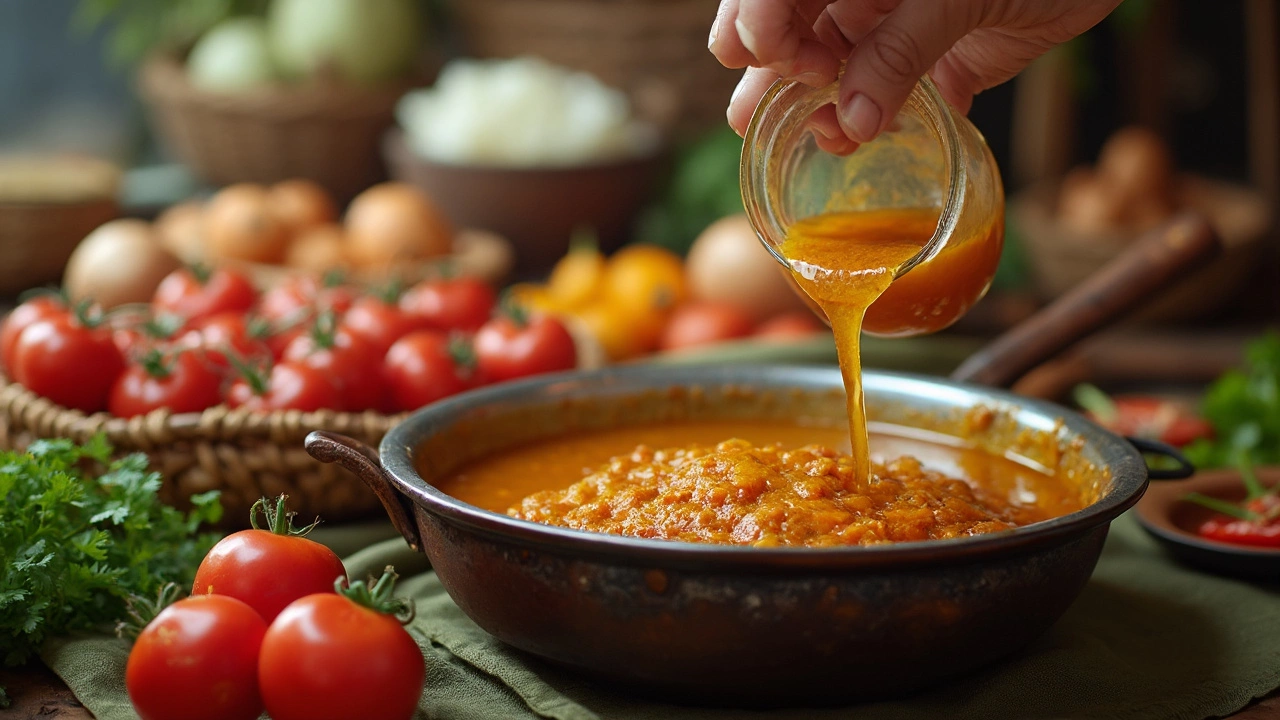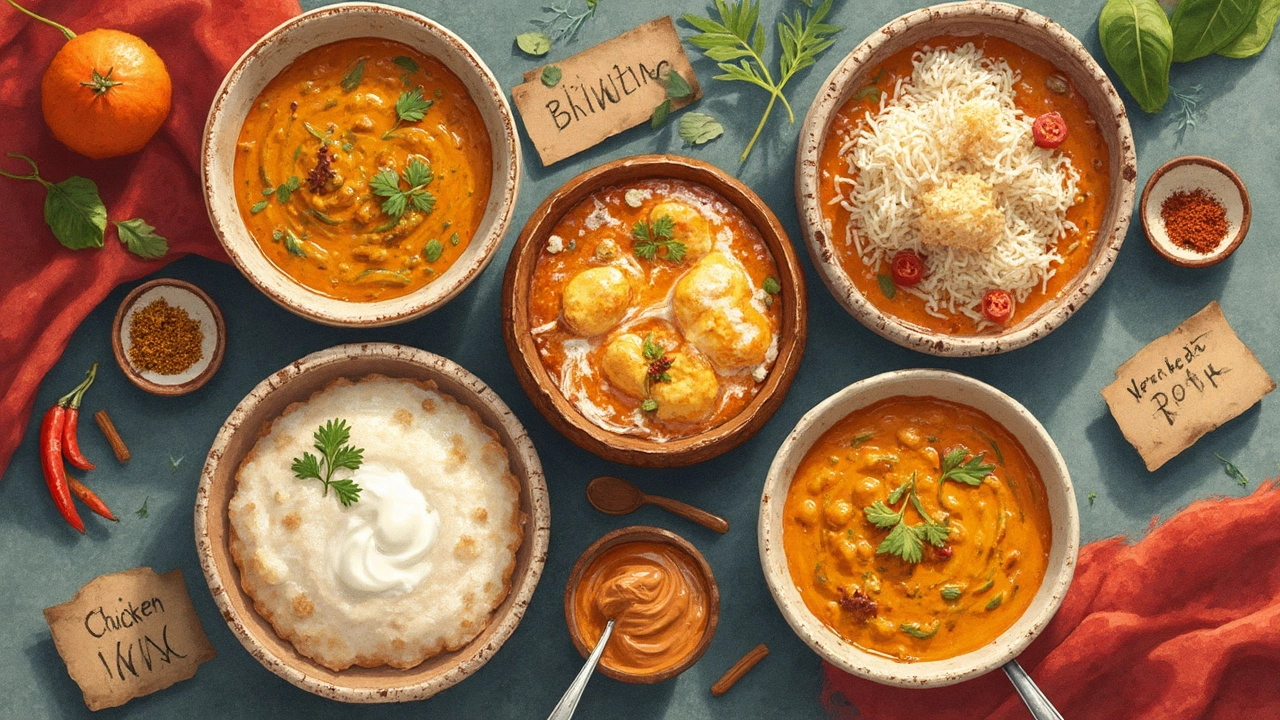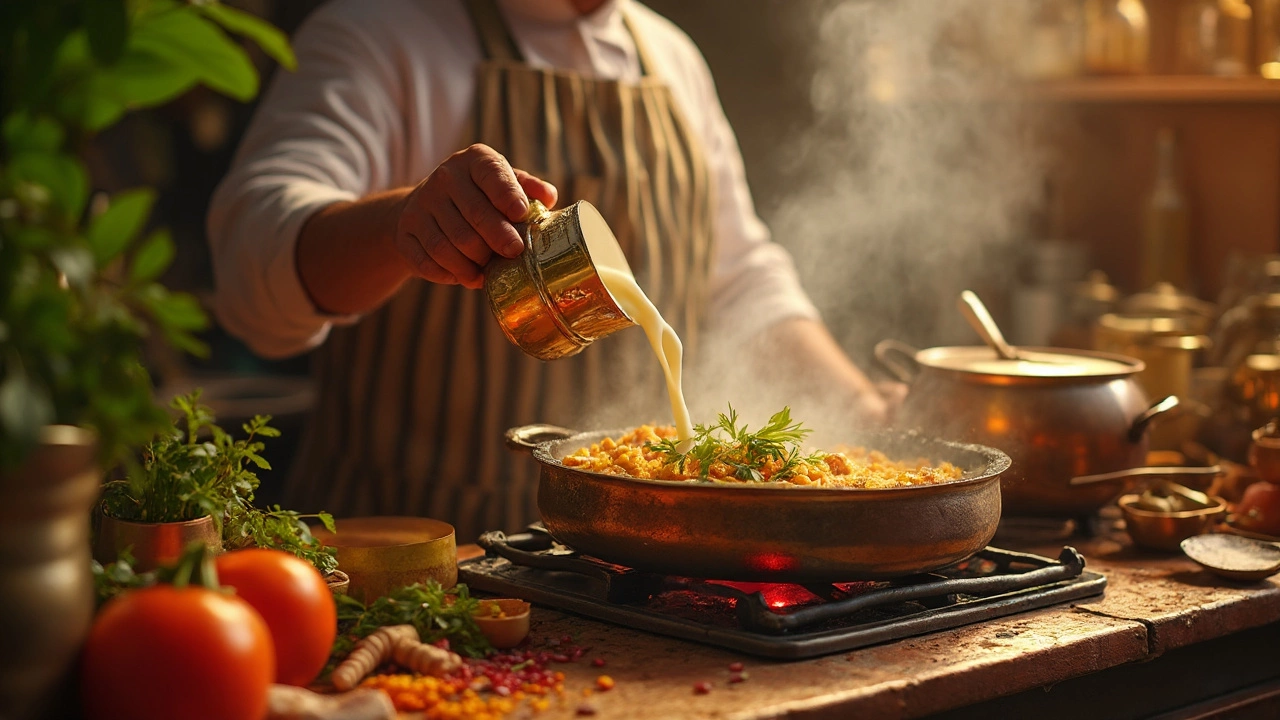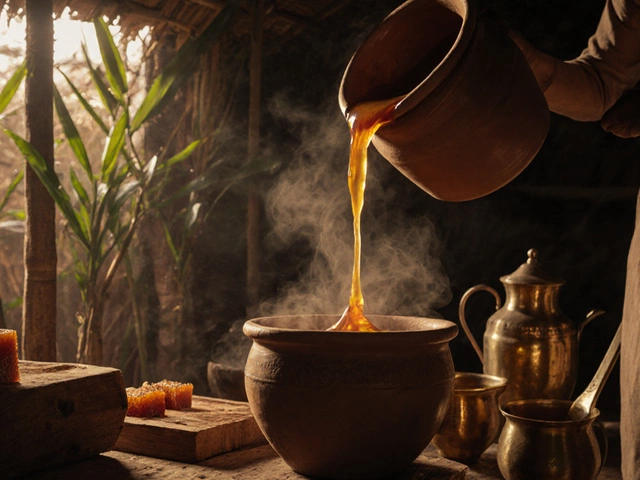Here’s something people don’t usually tell you right away: the secret to legendary curry isn’t just the spices. You could have all the turmeric, cumin, and garam masala in the world, but if you pour in the wrong liquid, you either end up with a bland stew or a flavor bomb that tastes nothing like the comforting curries people crave. Ever wondered why that restaurant curry haunts your dreams, but your home version is just… meh? It could be the liquid you’re adding. Different liquids do wildly different things—some make the curry rich and creamy, others bring a punchy edge, and a few just ruin the texture if you’re not careful. Let’s sort it out so the next time you grab your wok, you know exactly what to pour in that pot.
Coconut Milk: The Creamy Game Changer
Picture this: it’s a rainy night, and you crave Thai green curry. There’s only one thing that gives it that silky, luxurious body—coconut milk. It’s not just for Thai curries, either. Across southern India and Southeast Asia, cooks reach for coconut milk when they want to create a mild, sweet foundation for powerful spices. The magic of coconut milk lies in its natural fat. When heated, those oils blend with your aromatics, helping the spices bloom. That’s why a classic Thai red curry or South Indian fish curry never feels harsh or watery—it hugs the tongue thanks to coconut’s rich texture. A single can usually provides enough creaminess for a family meal. But not all coconut milks are equal. The best ones use only coconut and water, with nothing else. Avoid versions heavy on thickeners or preservatives—they can split or turn grainy as they simmer. Shake the can before opening, as fat tends to separate. Fun fact: an unopened can of good coconut milk, left at room temperature, can set naturally into a thick cream on top. Use that for extra richness or even to create that tempting layer of oil that floats on the curries you see at your favorite restaurant. If you want a lighter curry but still crave coconut’s aroma, use coconut water instead. It gives a subtle sweetness, minus the creamy weight. Some home cooks also do half coconut milk, half stock, to hit a balance between richness and a more soup-like feel. Sensible, especially in lighter summer curries.
Broth and Stock: The Depth Builders
Sometimes people get stuck using just water, wondering why their curry tastes a bit flat, no matter how much seasoning they throw in. Here’s what chefs do: reach for broth or stock. Chicken broth, vegetable broth, and beef stock are real flavor-lifters. They bring umami, depth, and a savory strength that water alone just can’t compete with. When you simmer curry in a well-made beef or chicken stock, it acts like a flavor magnet, making both the meat and the veggies soak up more taste. A homemade broth almost always tops the store-bought versions. If you have time, boil chicken bones with onions, garlic, and some ginger—strain that, and you have a base that transforms an ordinary curry into something restaurant-worthy. Store-bought broths are totally fine if you’re short on time, though—just watch the sodium content; some are super salty and can throw off the balance. Here’s a quick reference:
| Liquid Type | Flavor Impact | Best for Curries |
|---|---|---|
| Chicken Broth | Savory, light, slightly sweet | Chicken, veggie, and dal curries |
| Beef Stock | Rich, deep, bold | Hearty meat curries |
| Veggie Broth | Mild, clean, subtle umami | Vegan, vegetarian curries |
| Coconut Milk | Creamy, sweet, smooth | Thai, Malaysian, South Indian curries |
If you want something bolder, like a vindaloo or a curry that should punch you back, go for beef stock. For lighter dals or mixed veggie curries, try unsalted vegetable stock. Broth is also perfect for batch-cooking or meal-prep, since it keeps well in the freezer and always packs more flavor than plain water.

Dairy: Yogurt, Cream, and Milk for that Lux Touch
Yogurt in curry is one of those tricks passed down for generations in Indian kitchens. It cools burning spices, brings tang, and makes everything feel velvety. North Indian favorites like chicken tikka masala or korma rely on thick curd or Greek yogurt to tame the heat. The key is to add room-temperature yogurt slowly, stirring well, so it doesn’t split. If it curdles, you end up with grainy bits instead of a smooth gravy, which nobody wants. But what about cream? It’s the cheat code for instant luxury. A splash of heavy cream at the end of cooking turns a rustic dish into company-worthy comfort food. This is how you get that restaurant-style finish—see those bright orange, glossy paneer butter masalas? That’s all down to a pour of double cream at the very end. Milk is more subtle. It’s common in lighter curries or when feeding kids. It keeps things mild and gives body, but doesn’t compete with bolder flavors like coconut does. Pro tip: use full-fat milk for best results, since it doesn’t split as easily and makes curries richer without overwhelming your spices.
Tomato and Tamarind: The Secret Acidic Edge
Feeling adventurous? Try tomato juice, crushed tomatoes, or even tamarind water as the main liquid in your curry base. Tomatoes, whether in puree, passata, or fresh chopped form, bring acidity and color. A butter chicken or a rogan josh just isn’t right without that tomato tang mellowed by slow simmering. The acid helps balance creaminess and cuts through richness—it’s why tomato-based curries still taste lively the next day. Tamarind water, made by soaking dried tamarind pulp in warm water, is the secret behind the tang in many South Indian and Thai curries. It brings a tart brightness no lemon or lime can match. Want that true “sweet-sour” finish in a Kerala fish curry or a Massaman curry? This is your answer. The only catch: go easy, as it’s powerful stuff. Too much and you end up with a puckering sourness. Start small and taste, always.

Other Surprising Liquids to Try
Alright, so you’ve probably tried the obvious options. But here’s where things get a little wild. Did you know that beer, apple cider, or even coconut water can tweak your curry’s personality in cool ways?
- Beer: Stout or dark beer adds a malty, roasty note—a trick for rich beef or lentil curries when you want a deeper body and complexity. Pour in slowly and let it simmer so the alcohol cooks off.
- Apple Cider: It’s a clever shortcut to both sweetness and light acidity. If you’re out of tomatoes or tamarind, just pour in a splash of good apple cider (not vinegar, the cloudy drink!). This works wonders in pork or vegetarian autumn-inspired curries.
- Coconut Water: Far lighter than coconut milk, it boosts aroma and brings a clean finish. A popular choice for light seafood curries and stews in Sri Lankan homes.
- Pineapple Juice: A favorite addition to some Malaysian and Caribbean curry styles, especially with chicken or shrimp.
- Fermented Rice Water: In eastern India, cooks use the leftover starchy water from cooked rice (called 'kanji') to mellow out especially strong-flavored fish curries.

